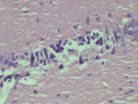(Press-News.org) Big data can yield big savings, if they are used in the right ways. David W. Bates of the Brigham and Women's Hospital and coauthors analyzed six use cases with strong opportunities for cost savings—high-cost patients; readmissions; triage; decompensation (when a patient's condition worsens); adverse events; and treatment optimization when a disease affects multiple organ systems. They suspect that cost-savings benefits will vary widely, though the current costs associated with all six scenarios will be significant. The authors suggest that using analytics for multiple conditions is likely to yield even stronger cost savings. They highlight key areas for policy makers to emphasize in this environment, including: federal investment in research into analytics and big data; a clearer regulatory stance at the Food and Drug Administration regarding the use of these tools; a strengthening of incentives for providers to control costs; and more defined privacy parameters regarding the use of big data at the federal level.
Don't get sick over the weekend, or go to a hospital with a lot of sick people already in beds. Flemming Madsen of the Allergy and Lung Clinic in Helsingoer, Denmark, and coauthors examined the effects of hospital bed shortages on patient outcomes using 2.65 million admissions to Danish hospitals from 1995–2012. They found that while high rates of bed occupancy (above 85 percent) can be a sign of more efficient care, they were also associated with a 9 percent increase in rates of both inhospital mortality and thirty-day mortality. In addition, they found that patients who were admitted outside of normal working hours had higher inpatient and thirty-day mortality rates, especially among the elderly. The authors further suggest that chronic bed shortages are likely a product of a self-regulating mechanism and deliberate planning to keep occupancy rates high. They recommend approaching high-occupancy rates as a public health issue as opposed to a purely economic one. They point out that the rapidly aging US population will put further strain on hospitals both with and without emergency departments.
A series of papers focus on comparative effectiveness and predictive analysis:
Implementing Electronic Health Care Predictive Analytics: Considerations And Challenges by Ruben Amarasingham of the Parkland Center for Clinical Innovation and coauthors
Patient-Powered Research Networks Aim To Improve Patient Care And Health Research by Rachael L. Fleurence of the Patient-Centered Outcomes Research Institute and colleagues
Assessing The Value Of Patient-Generated Data To Comparative Effectiveness Research by Lynn Howie of Duke University and colleagues
Optum Labs: Building A Novel Node In The Learning Health Care System by Paul J. Wallace of Optum Labs and colleagues
INFORMATION:
The July issue of Health Affairs was supported by the Gordon and Betty Moore Foundation, United Health Foundation, the Patient-Centered Outcomes Research Institute, Merck, Pfizer, IBM, the John A. Hartford Foundation, the California Health Care Foundation, and the Robert Wood Johnson Foundation.
Health Affairs is the leading journal at the intersection of health, health care, and policy. Published by Project HOPE, the peer-reviewed journal appears each month in print, with additional Web First papers published periodically and health policy briefs published twice monthly at http://www.healthaffairs.org. Read daily perspectives on Health Affairs Blog. Download monthly Narrative Matters podcasts on iTunes. Tap into Health Affairs content with the new iPad app.
The impact of big data on health care: Health Affairs' July issue
2014-07-09
ELSE PRESS RELEASES FROM THIS DATE:
Discovery of new drug targets for memory impairment in Alzheimer's disease
2014-07-09
VIDEO:
This is a movie showing how the reactive astrocytes in the brains of Alzheimer's disease model produce the inhibitory transmitter GABA by the enzyme MAO-B and release GABA through the...
Click here for more information.
Alzheimer's disease, which is the most common cause of dementia, is fatal and currently, there is no cure. In Alzheimer's disease, brain cells are damaged and destroyed, leading to devastating memory loss. It is reported that 1 in 8 Americans aged 65 or over ...
Neuroprotective effects of low concentration of lithium
2014-07-09
Lithium, as a neuroprotective agent, benefits for neuronal survival. Recent cDNA array studies have demonstrated that mood stabilizer lithium exhibits neuroprotective effects through multiple targets. Dr. Riadh Nciri and his team, Purpan Medicine Faculty, Paul Sabatier University, France, exposed SH-SY5Y cells to 0.5 mmol/L lithium carbonate for 25-50 weeks and then detected the expression levels of some neurobiology related genes and post-translational modifications of stress proteins in SH-SY5Y cells. cDNA arrays showed that pyruvate kinase 2 (PKM2) and calmodulin 3 expression ...
Filiform needle acupuncture versus antidepressant drugs for poststroke depression
2014-07-09
Whether acupuncture or antidepressant drugs exhibit better therapeutic effects on poststroke depression remains disputed. The effectiveness of acupuncture for poststroke depression can be evaluated by evidence-based medicine studies, which provide evidence for clinical application. Systematic review or meta-analysis studies have demonstrated that early acupuncture is superior to conventional western medicine in the treatment of poststroke depression. However, high-quality literatures are needed to further validate the effectiveness of acupuncture for poststroke depression. ...
What aggravates hippocampal neuronal injury in acute cerebral ischemia?
2014-07-09
Activation of extracellular signal-regulated kinase 1/2 has been demonstrated in acute cerebral ischemia. Yaning Zhao and her colleagues, Hebei United University, China induced transient whole-brain ischemia by four-vessel occlusion in normal and diabetic rats and intravenously injected diabetic rats with extracellular signal-regulated kinase 1/2 30 minutes before ischemia as a pretreatment. Results showed that during the pathological progression of cerebral ischemia/reperfusion in rats, activation of extracellular signal-regulated kinase 1/2 exhibits protective effect ...
Depression in AMD patients with low vision can be halved by integrated therapies
2014-07-09
SAN FRANCISCO – July 9, 2014 – The first clinical trial to examine integrated low vision and mental health treatment has shown that the approach can reduce the incidence of depression by half among people with low vision due to age-related macular degeneration (AMD). The results of the study were published online today in Ophthalmology, the journal of the American Academy of Ophthalmology.
Low vision is a visual impairment that interferes with a person's ability to perform everyday tasks and cannot be corrected with glasses, contact lenses, medicine or surgery. A common ...
Rehabilitation helps prevent depression from age-related vision loss
2014-07-09
Depression is a common risk for people who have lost their vision from age-related macular degeneration (AMD), but a new study shows that a type of rehabilitation therapy can cut this risk in half. The study was funded by the National Eye Institute (NEI), part of the National Institutes of Health.
"Our results emphasize the high risk of depression from AMD, and the benefits of multi-disciplinary treatment that bridges primary eye care, psychiatry, psychology, and rehabilitation," said Barry Rovner, M.D., a professor of psychiatry and neurology at the Sidney Kimmel Medical ...
Researchers led by Stanford engineer figure out how to make more efficient fuel cells
2014-07-09
Solar power and other sources of renewable energy can help combat global warming but they have a drawback: they don't produce energy as predictably as plants powered by oil, coal or natural gas. Solar panels only produce electricity when the sun is shining, and wind turbines are only productive when the wind is brisk.
Ideally, alternative energy sources would be complemented with massive systems to store and dispense power – think batteries on steroids. Reversible fuel cells have been envisioned as one such storage solution.
Fuel cells use oxygen and hydrogen as fuel ...
Children on dairy farms less likely to develop allergies
2014-07-09
The occurrence of allergic diseases has risen dramatically in Western societies. One frequently cited reason is that children are less exposed to microorganisms and have fewer infections than previous generations, thereby delaying maturation of the immune system.
A study by researchers at Sahlgrenska Academy, University of Gothenburg, monitored children until the age of three to examine maturation of the immune system in relation to allergic disease. All of the children lived in rural areas of the Västra Götaland Region, half of them on farms that produced milk.
Lower ...
USC scientists discover immune system component that resists sepsis in mice
2014-07-09
Molecular microbiologists from the Keck School of Medicine of the University of Southern California (USC) have discovered that mice lacking a specific component of the immune system are completely resistant to sepsis, a potentially fatal complication of infection. The discovery suggests that blocking this immune system component may help reduce inflammation in human autoimmune and hyper-inflammatory diseases such as rheumatoid arthritis and Type 2 diabetes.
The study was published online on June 23 in The Journal of Experimental Medicine, a leading peer-reviewed scientific ...
Thyroid hormone protects hippocampal cholinergic neurons in normal aged animals
2014-07-09
Can thyroid hormone protect neuronal function and increase the survival rate of naturally aged animals? Prof. Ailing Fu and her team, School of Pharmaceutical Sciences, Southwest University, China performed an animal experiment in which aged mice were administered with low dose of levothyroxine for 3 consecutive months. Results showed that the aged rats exhibited an obvious improvement in cognitive and an increased rat survival rate from 60% to 93%. The underlying mechanism was demonstrated that levothyroxine treatment can increase the levels of choline acetyltransferase ...



